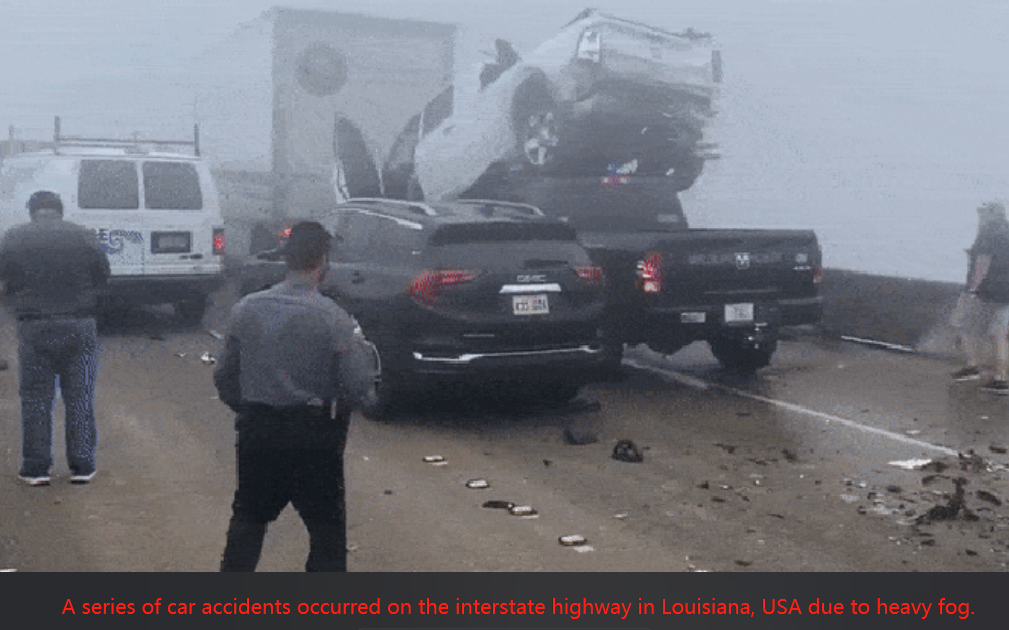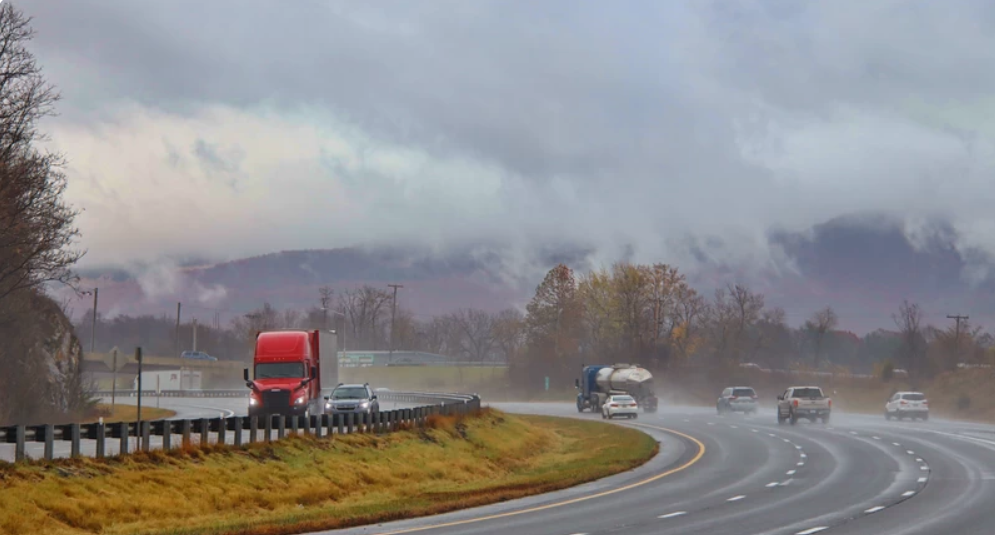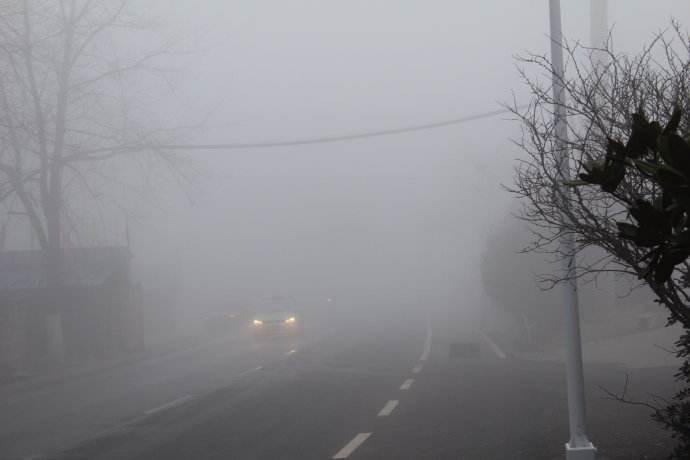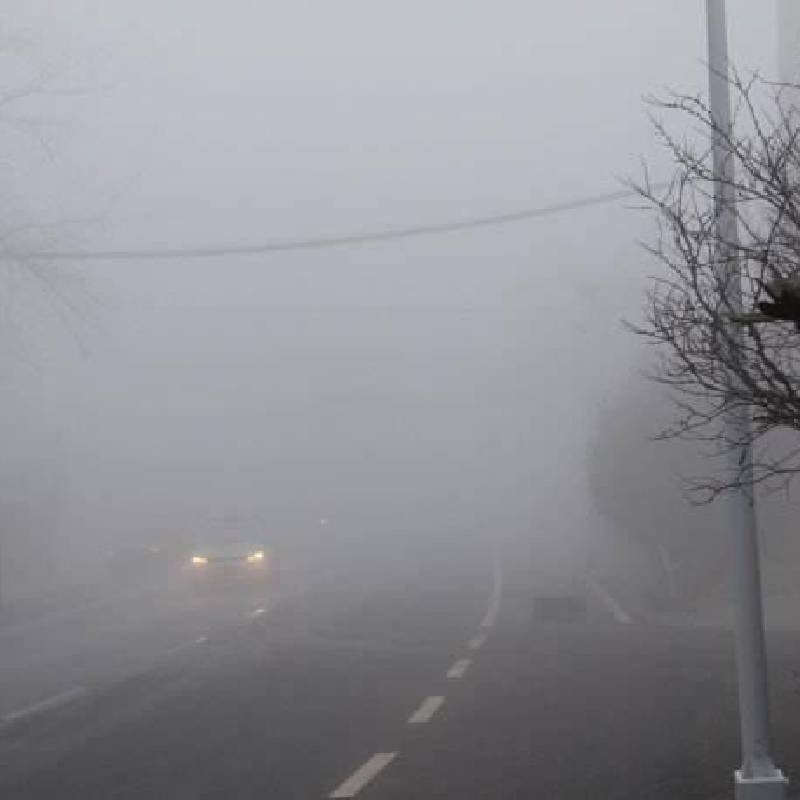Safe Driving in Fog: 10 Lifesaving Tips to Avoid Disaster
Master safe driving in fog with 10 expert tips & breakthrough tech. Our ultimate guide reveals lifesaving strategies. Read now!
One morning in October 2023, drivers on I-10 in Louisiana faced a day they would never forget. A clear road disappeared into thick white fog. Visibility dropped below 50 feet instantly, creating one of the most hazardous fog driving conditions imaginable.
The first crash was quickly followed by the sound of screeching metal and breaking glass. When the fog cleared, the scene was devastating—158 vehicles piled together in a mass of twisted wreckage. This tragic event underscores the critical importance of fog driving safety.
The NHTSA, with reports from local authorities, confirmed that this tragic fog-related crash killed at least 8 people, injured over 60, and left many with lasting trauma. Driving in dense fog is more dangerous than many realize. Learning safe driving in fog techniques and using advanced technology like Robofinity are essential for protecting your family.

High-Risk Fog Zones in the U.S.: Lessons from Accident-Prone Regions
Driving in certain parts of the U.S. requires heightened awareness of dense fog risks. Local climate and geography make these areas especially dangerous, demanding specific knowledge on how to drive in thick fog.
1.Geographic Distribution and Causes of Fog
Fog forms differently by region. Knowing why helps you prepare for these challenging fog driving conditions.
- Appalachian Mountains (West Virginia, Tennessee): This area often gets valley fog. Cold air sits in valleys, meeting warm moist air above. This creates dense fog. The region typically has over 40 fog days a year. In fall and winter, mountain roads become especially hazardous, requiring expert driving in fog tips.
- Gulf Coast (Louisiana, Southeast Texas, Florida): Advection fog is common here. Warm Gulf water evaporates, meeting cooler air over land. This forms thick sea fog that drifts inland. The area approximately sees 50–80 fog days yearly, most often at dawn and dusk, making fog safety a primary concern for commuters.
- California Central Valley: Radiation fog is frequent. The ground cools fast at night. A temperature inversion traps moisture, forming fog. There are about 30–50 fog days per year, with winter being worst. Fog can sometimes last all day, creating persistent low visibility driving challenges.
- Great Lakes Region (Michigan, Northern Ohio): Steam fog occurs here. Cold air moves over warmer lake water. The water evaporates and condenses into dense fog. The region typically has 35–60 fog days a year, mainly in spring and fall, significantly increasing fog accident risks.

2.Accident Statistics
Behind the numbers are real tragedies. These records show why fog driving safety demands serious attention.
- West Virginia (2018–2023): Fog contributed to 1,247 crashes. These caused 89 deaths and 537 serious injuries. A 76-vehicle pileup on I-64 in 2021 was caused by low visibility. Drivers couldn’t see ahead in time to brake, highlighting the critical need to avoid fog car accident scenarios.
- Louisiana (2018–2023): The state had 2,183 fog-related accidents. They led to 134 deaths and 897 serious injuries. A 43-vehicle collision on I-10 in 2023 was also due to thick fog, reinforcing the importance of safe driving in fog practices.
- California Central Valley (2018–2023): There were 3,417 fog-related accidents. They resulted in 217 deaths and 1,245 serious injuries. In a 2022 event on Highway 99, 32 cars collided. Many drivers crashed before they saw the stopped traffic, demonstrating how crucial it is to improve visibility in fog.
- Southeast Texas (2018–2023): The area had 1,896 fog-related accidents. These caused 121 fatalities and 683 serious injuries. Sea fog often appears suddenly, surprising drivers and emphasizing the value of fog safety preparations.

3.Climate Change Effects
Climate change is making fog worse. Studies show fog frequency along the Gulf Coast has risen 23% in a decade. Fog is also getting denser, creating more frequent low visibility driving conditions.
Data also shows fog-related accidents increasing by 4.7% each year. This means greater risk ahead. Using technology and skills for fog driving safety is now necessary rather than optional.
Pre-Trip Prep: Essential Checks Before Driving
Driving in fog requires extra preparation. A proper fog safety checklist can prevent accidents before they happen.
1.Vehicle Check
Your car’s condition dramatically affects safe driving in fog. Inspect these before you go.
- Lights: Check fog lights, headlights, taillights, and brake lights. Fog lights are vital for seeing the road, and the others ensure you are visible to others. Don’t drive if any are out. Knowing how to use fog lights correctly is fundamental to fog driving safety.
- Windshield and Wipers: Clean your windshield inside and out. Dirty glass attracts condensation. Check wiper blades. Worn blades won’t clear moisture well. Use an anti-fog spray on the glass to maintain clarity.
- Tires: Check tread depth and pressure. Worn treads reduce grip on wet roads. Wrong pressure hurts handling. Even slight traction loss can cause an accident in fog, compromising your entire fog safety plan.
2.Weather and Route Planning
Check conditions and plan your route to avoid the worst fog driving conditions.
- Apps and Resources: Use apps like AccuWeather or Weather.com for fog alerts. Check local DOT sites or apps—like Caltrans in California—for real-time road conditions and low visibility driving warnings.
- Route Strategies: If your route is foggy, choose a detour. Pick roads that are higher and more open. Avoid valleys, coasts, and lakesides. If you can’t avoid fog, delay your trip until it lifts. This simple decision is one of the most effective driving in fog tips to avoid fog car accident situations.
3.Emergency Kit
If you break down in fog, an emergency kit is crucial. Every driver should know what to do if you break down in fog.
- Basic Gear: Carry warning triangles, a flashlight, a reflective vest, and a power bank for your phone. These are essential for fog safety and visibility.
- Breakdown Add-ons: Include a tow rope, a spare tire, a jack, water, and snacks. These help if you’re stuck waiting for help, turning a potential crisis into a manageable situation.
Core Driving Techniques: Pro Tips for Fog
Good preparation helps, but skill matters most. These professional driving in fog tips improve safety.
1.Speed Control
Speed is critical in fog. Too fast means no time to react and avoid fog car accident scenarios.
- Visibility Equals Speed Rule: Don’t let your speed (in mph) exceed visibility (in feet). If you see 200 feet ahead, keep speed under 30 mph. If visibility is 100 feet, go 20 mph or less. Never try to match other cars’ speed. This is the golden rule of safe driving in fog.
- Following Distance: Use the 6-second rule, not the usual 3-second rule. This extra space gives you time to brake if the car ahead stops, a key strategy for fog driving safety.
2.Using Lights Correctly
Wrong light use makes fog driving conditions worse. Do it right to see and be seen.
- No High Beams: They reflect off fog, creating a blinding wall of light. Never use them in fog.
- Fog Light Use: Turn on fog lights when visibility is under 500 feet. They shine low, under the fog. Also use low beams and parking lights. Use hazard lights only if stopped or moving very slowly, as regulations on is it illegal to use hazard lights in fog vary by state.
- Signaling in Emergencies: Flash your brake lights or switch low beams on/off to warn drivers behind you. If stopping, use hazards and pull over slowly.
3.Lane Positioning
It’s easy to drift in fog. These methods help maintain safe driving in fog.
- Follow the Right Edge: Use the right edge line or barrier as a guide. This keeps you in lane and away oncoming traffic, a simple but vital driving in fog tips.
- Avoid Target Fixation: Don’t stare at one point. Keep scanning the road and mirrors. Stay aware of your surroundings to avoid fog car accident incidents.
4.Handling Sudden Problems
Emergencies happen. Stay calm and react correctly to ensure fog driving safety.
- Entering a Fog Bank: Don’t panic. Slow down gently. Turn on fog lights and low beams. Hold your lane. Don’t change lanes or pass. Focus on the right edge line.
- Spotting Accidents Ahead: Watch for flashing lights or sounds of crashes. Slow down and be ready to stop. If you see a crash, move carefully away from the road. Don’t stop near the scene.
How Technology Helps: Modern Tools for Fog Driving
Good skills are essential, but the best fog driving tech adds important protection. Choose the right tools to improve visibility in fog.
1.Limits of Traditional Tech
Standard driver-assist systems often fail in low visibility driving conditions.
- Radar and Camera Issues: Radar range shortens in fog. It may mistake fog for objects. Cameras need light. They don’t work well in low visibility, making them unreliable for fog driving safety.
- Research Findings: IIHS studies show traditional systems fail over 60% of the time in fog. In a 2023 California accident, a car with standard assist crashed into a stopped vehicle in fog. The system didn’t see it.
2.Thermal Imaging Breakthrough (The Robofinity Solution)
Thermal imaging for driving solves many fog issues. Based on our testing, Robofinity leads in this field as the best fog driving tech.
- How Thermal Imaging Works: It detects heat, not light. All objects emit heat, which passes through fog. The camera creates a clear image from this, significantly improve visibility in fog.
- Vs. Traditional Night Vision: Night vision needs some light. It fails in total darkness or thick fog. Robofinity’s thermal imaging for driving works with no light, in any fog.
- How Robofinity InsightDrive Works: A front-mounted thermal camera car system scans up to 656 feet ahead. It shows a thermal image on your display, outlining cars, people, and animals in colors for easy ID. Its AI analyzes the image. If it detects danger, it alerts you with a sound. This Robofinity InsightDrive review confirms its capabilities.

3.Real-World Performance
User reviews confirm Robofinity’s effectiveness in tough fog driving conditions.
- 656-Foot Range: This long range gives you 10+ seconds to react. Standard radar may only see 100–200 feet in fog, giving just 2–3 seconds.
- AI Detection Skills: The AI distinguishes between people, animals, and vehicles. It reduces false alarms. This is vital in rural areas with animals on the road.
4.Using Technology Wisely
Tech helps, but doesn’t replace the driver for safe driving in fog.
- Avoid Over-Dependence: Robofinity helps you see, but you must drive. Keep hands on the wheel and focus on the road. Don’t speed up just because you have the system.
- Balance Tech and Judgment: Use tech as a tool. If it alerts you, still make your own decisions. If the system fails, use your driving skills. Your judgment is most important for ultimate fog driving safety.
Emergency Handling: If Things Go Wrong
Even with preparation, emergencies occur. Correct response reduces harm and is a key part of your fog safety checklist.
1.Breaking Down Safely
If your car fails in fog, stop safely. Every driver should know what to do if you break down in fog.
- Pull Over Safely: Turn on hazard lights. Slow down gradually. Steer to the right, completely off the road. Use a pull-off area if possible. Park, use the parking brake, and turn off the engine (keep hazards on). Everyone should exit away from traffic and move to a safe spot.
- Warn Other Drivers: Place warning triangles at least 200 feet behind your car. If no triangles, opening the trunk may increase visibility.
2.Accident Response
If in a crash, protect everyone and prevent more accidents.
- Secure the Scene: Check for injuries. Don’t move injured people unless necessary. Turn on hazards and set up triangles. Take photos for insurance. Move everyone to a safe area.
- Call for Help: Call 911. Give your exact location. Report vehicles involved, injuries, and need for aid. Share your location if possible. Leave your name and number. Keep your phone ready.
3.Medical Emergencies
Give basic first aid if needed.
- First Aid: For bleeding, press firmly with a clean cloth. For breaks, don’t move the person. Support the injury. If unconscious, place on their side.
- Waiting for Help: Stay in a safe area. Keep warm. If someone is hurt badly, stay with them. Monitor breathing. If breathing stops, start CPR if trained. Listen for rescuers and signal when they arrive.
Conclusion: Your Comprehensive Fog Safety Plan
Fog driving isn’t about luck. It requires preparation, skill, and technology. The tragic accidents in Louisiana and California remind us that risk is real.
Protect your family by preparing. Check your car before you drive. Check weather and plan routes. Pack an emergency kit. Follow a strict fog safety checklist.
Learn the core skills. Match speed to visibility. Keep extra distance. Use lights right. Follow the right edge line. Stay calm in emergencies. Master these driving in fog tips.
Use technology wisely. Based on our research, thermal imaging for driving like Robofinity InsightDrive helps greatly. It sees through fog, giving early warnings. It’s the best fog driving tech for low visibility driving, acting as a second pair of eyes when visibility fails.
There are no shortcuts to fog driving safety. Every check, every skill, every smart choice adds protection. Don’t wait for an accident. Start using these methods now. Make fog just another condition you handle safely. Whether you drive in mountains or coast, take fog seriously. Arrive safely every time.

